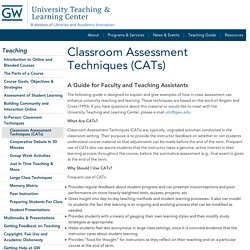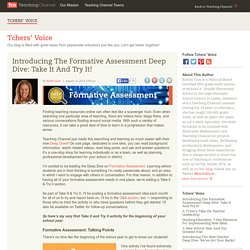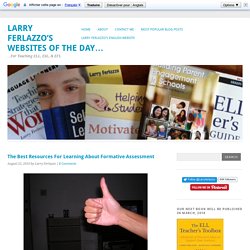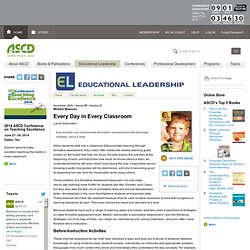

Classroom Assessment Techniques (CATs) The following guide is designed to explain and give examples of how in-class assessment can enhance university teaching and learning.

These techniques are based on the work of Angelo and Cross (1993). If you have questions about this material or would like to meet with the University Teaching and Learning Center, please e-mail utlc@gwu.edu. What Are CATs? Classroom Assessment Techniques (CATs) are, typically, ungraded activities conducted in the classroom setting. Their purpose is to provide the instructor feedback on whether or not students understand course material so that adjustments can be made before the end of the term. Why Should I Use CATs? Frequent use of CATs: Provides regular feedback about student progress and can preempt misconceptions and poor performance on more heavily-weighted tests, quizzes, projects, etc.Gives insight into day-to-day teaching methods and student learning processes.
Implementation and Examples of CATs Tips on implementation Additional Resources References. Learn About Formative Assessment With A Deep Dive. Classroom Assessment Techniques (CATs) Introducing The Formative Assessment Deep Dive: Take It And Try It! Finding teaching resources online can often feel like a scavenger hunt.

Even when searching one particular area of teaching, there are videos here, blogs there, and various conversations floating around social media. With such a variety of resources, it can take a great deal of time to learn in a progression that makes sense. Teaching Channel just made this searching and learning so much easier with their new Deep Dives! On one page, dedicated to one idea, you can read background information, watch related videos, read blog posts, and ask and answer questions. It’s a one-stop shop for learning individually or as a team, as well as planning professional development for your school or district.
I’m excited to be leading the Deep Dive on Formative Assessment. As part of Take It & Try It, I’ll be posting a formative assessment idea each month for all of us to try and report back on. So here’s my very first Take it and Try it activity for the beginning of your school year: The Best Resources For Learning About Formative Assessment. (Thumbs are one of my favorite forms of formative assessment) Be sure to read my Ed Week column, Ways to Include Students in the Formative Assessment Process.

As the new school year approaches (we go back in two more weeks), I’ve been thinking a bit on how I can be a little more intentional and strategic in using formative assessment. For those who might be new to the term, formative assessments are ongoing practices that help both the teacher and student evaluate and reflect on how they are both doing, and what changes either or both might need to make to become a more effective teacher and learner (I’d love it if someone left a comment with a better definition). I use a lot of these in my classroom, ranging from regular cloze (fill-in-the-blank) and reading fluency assessments, to “show me with thumbs,” to observations.
I feel that I use them pretty effectively, but also feel that I could do a better job applying what I learn from them in the classroom. Multiple Measures:Every Day in Every Classroom. When students walk into a classroom that promotes learning through formative assessment, they notice.

Mei notices the weekly learning goals posted on the board that help her focus. Ernesto enjoys the activities at the beginning of each unit that probe how much he knows about a topic; he understands that he will learn much more along the way. Casey feels secure knowing exactly how grades will be determined, and she is becoming good at assessing her own and her classmates' work using rubrics. These markers of a formative assessment approach not only make day-to-day learning more fruitful for students like Mei, Ernesto, and Casey, but they also take the fear out of summative tests and annual standardized tests—the elephant in the room that frightens students and teachers alike. These learners don't fear the elephant because they've used multiple measures to track their progress on learning standards all year.
Before-Instruction Activities During-Instruction Check-Ins Endnote.